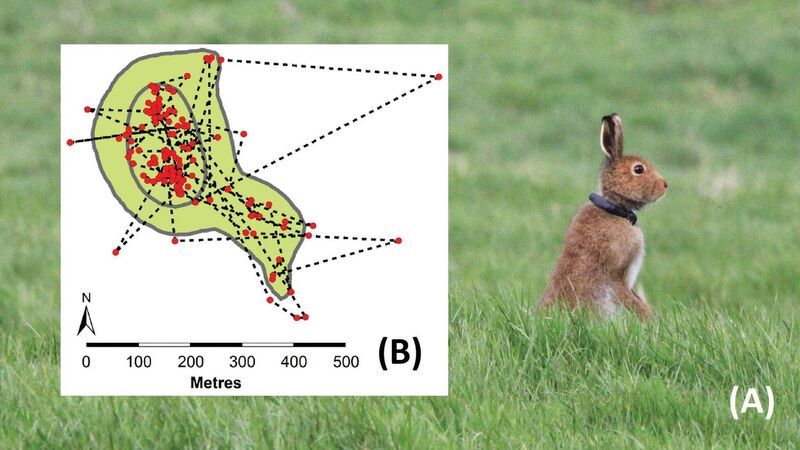Donal Hickey: What happens to coursed hares when they are released?

An Irish hare (Lepus timidus hibernicus) wearing a LOTEK Ltd. Litetrack RF60 collar after release back into the wild. The red dots show the hare's GPS locations for one week. In this example, the average step length was 68m/hr, the furthest single movement was 530m with the animal travelling on average 1.7km/24hrs and 11.6km/week. Picture: Neil Reid
Though not as numerous as it was decades ago, the hare continues to be one of our most widespread wild mammals, according to the Irish Wildlife Trust (IWT).
Enclosed hare coursing, even with muzzled greyhounds, continues to be controversial and there are also issues around what happens to hares when they’re returned to the wild after coursing meetings.








